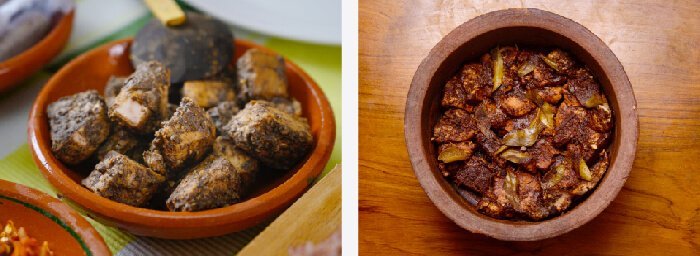The Sour Fish Curry, also known as the Fish ambul thiyal, is a tangy, spicy fish curry that has been relished for years by Sri Lankans. It can be enjoyed with rice, string Hoppers, and even hot Coconut Roti. This meal, thought to have originated in the South of the Island, is enjoyed not only for its rich flavors, but also because it can be kept at room temperature for up to a week or refrigerated for much longer. The most usually used fish for this recipe are Kelawalla (Yellowfin Tuna), Balaya (Skipjack Tuna), and Thalapath (Sailfish), but any firm fish will suffice.
Sour fish curry (Fish Ambul thiyal) preparation
Ingredients
- 500g fish
- ½ onion- sliced
- 8 tbsp Black Pepper
- 10 pcs of Goraka (Indian Tamarind / Brindleberry / Gambooge).
- ½ tablespoon Chili Powder
- ¼ teaspoon Turmeric
- 3 Curry Leaves
- Salt – to taste
- 3 cups water (It is depend on the size of the saucepan)
- Salt to Taste
Method
- In a small saucepan, bring the Goraka and 1/2 cup of water to a boil.
- Once well cooked, mince the goraka with a little hot water until it forms a fine black paste.
- Cut the fish into cubes, wash it thoroughly with salt water, and place it in the pot.
- Mix in the remaining ingredients and spices, as well as the Goraka Paste, until the mixture is evenly distributed among the pieces of fish (be careful not to break the pieces when mixing).
- Add the remaining water, roughly 2 – 2 1/2 cups, to the pot and boil over medium heat until the gravy is a thick paste.
- Season with salt to taste.








